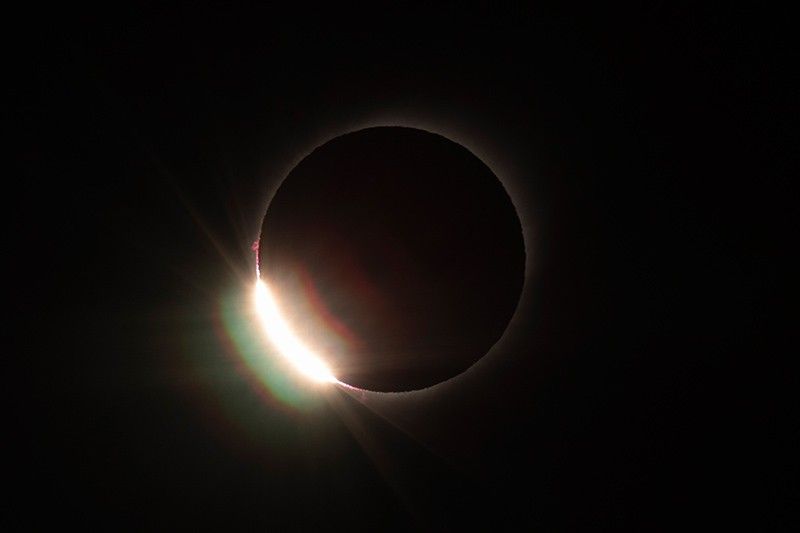South Americans marvel at total solar eclipse

LA HIGUERA, Chile — A rare total solar eclipse plunged a vast swath of Latin America's southern cone into darkness Tuesday, briefly turning day into night and enthralling huge crowds in much of Chile and Argentina.
Hundreds of thousands of people flocked to Chile's northern Coquimbo region near the Atacama desert—festooned with some of the planet's most powerful telescopes—which was situated directly on the eclipse's 100-mile-wide "path of totality."
Large crowds congregated in the town of La Higuera, some 2,400 meters above sea level and near the landmark La Silla Observatory, operated by the European Southern Observatory.
"I don't believe there's a better place in the world to see an eclipse than La Silla," said Australian tourist Betsy Clark.
Clark and her family were among thousands who flocked to the craggy peaks around the observatory on Tuesday.
They were not disappointed. The eclipse had its longest duration as it made to La Silla: 2.36 minutes.
"It was an experience to last several lifetimes," said Chilean tourist Rene Serey.
Solar eclipses happen when the Sun, the Moon and Earth line up, allowing the Moon to cast its shadow on Earth.
The area where the observatory is located, with its dry weather, crystal-clear air and low light pollution, is a stargazers' paradise.
To the west, in the coastal town of La Serena, thousands of people on the beach cheered and clapped at the moment when the Moon closed over the Sun and blocked it out completely.
"Oh my God, it's incredible!" shouted some, while others chanted "more, more, more!"
Many remained silent, enchanted and moved by one of nature's spectacles.
"The truth is that even if one knows what's going on, it is shocking the minute that the shadow of darkness begins to come and that silence begins," said astronomer Sonia Duffau, as she choked back tears.
Total solar eclipses are rare, but what is even rarer about Tuesday's event is that it occurred directly over an area of the Earth most prepared to study the heavenly bodies.
"Very seldom has it happened that the whole of an eclipse is seen over an observatory, the last time this happened was in '91" at the Mauna Kea observatory in Hawaii, said Matias Jones, an astronomer at La Silla.
Both Chile and Argentina were situated under the narrow, 6,000-mile long band of Earth that experienced the eclipse.
The eclipse began at 13:01 (17:01 GMT) in the Pacific Ocean, and a 95 mile (150 kilometer)-wide band of total darkness reached Chile's coast at 4:38 pm (20:38 GMT), before crossing into southeastern Argentina and into the wastes of the South Atlantic.
'Eyes of humanity'
Chile's President Sebastian Pinera joined the crowds at La Higuera to witness the eclipse.
"Today is a very important day and one we have waited for so long," said Pinera.
Pinera said Chile was "the capital of the world in terms of astronomy, we are the eyes and the senses of humanity, being able to look, observe and study the stars and the Universe."
The La Silla observatory and its fleet of powerful telescopes live streamed the event and opened the site to the public, hosting school tours along with talks and workshops.
In the capital Santiago, crowds flocked to rooftops, downtown parks and squares to witness the event. Schools closed early so that children could prepare for the viewing.
Over the border in Argentina, people massed to look into the sky in the western Cuyo wine-producing region, which had the country's longest exposure to the eclipse.
However little could be seen in the Argentine capital Buenos Aires, where overcast weather blocked the view.
La Silla was one of the first international observatories installed in northern Chile. Today the region has today almost half the world's astronomical observation capacity.
Scientists and astronomers will use data collected from studying the eclipse to verify theories and carry out experiments.
"Eclipses are a chance to study the outer part of the atmosphere, which is the corona, since the moon is covering the entire central part of the Sun," said Jones.
The next total eclipse will be visible in southern Chile on December 14, 2020.
- Latest






























